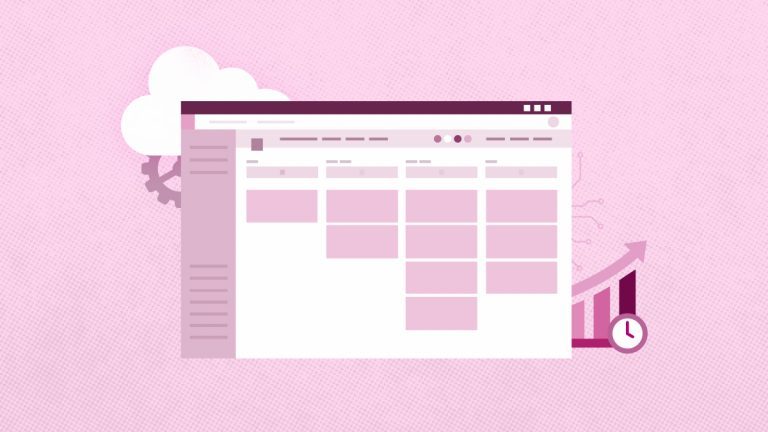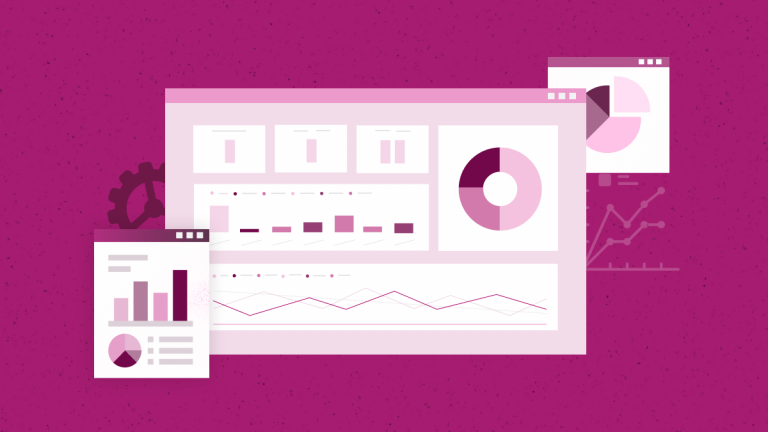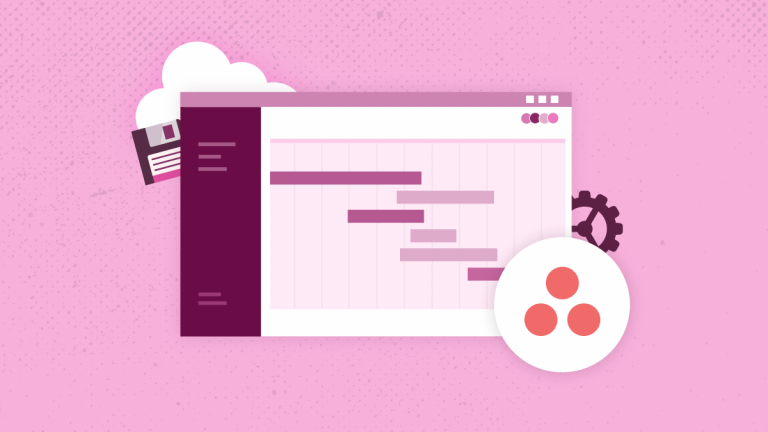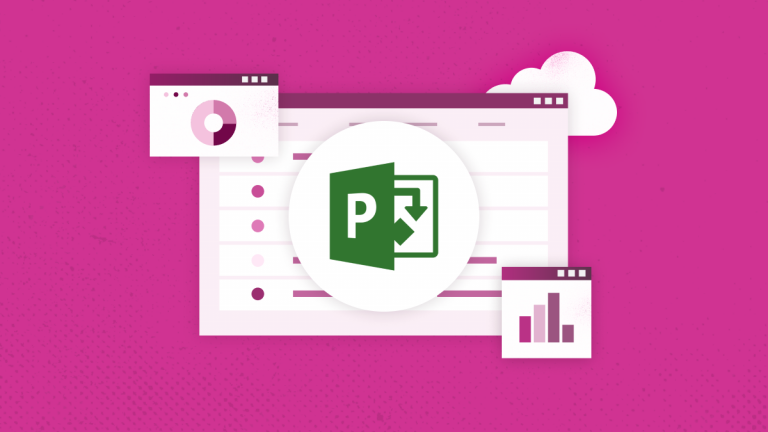
Anna Shalomova
PPM Consultant
Microsoft Power BI Embedded (PBIE) allows application developers to embed impressive, fully interactive reports into their applications without wasting time and money on creating their own data visualizations and controls from scratch. The target audience for a Power BI Embedded service is developers and companies that create their applications, called independent software vendors.
How is Power BI Embedded Different From Power BI?
Power BI Embedded is designed for independent software vendors and developers who create applications and want to embed visual elements to help customers solve their problems without creating analytics tools from scratch. Built-in analytics allows business users to access business data and perform requests to generate analytical information in the application based on this data. Power BI is an analytics software solution that provides organizations with a unified view of their business-critical data.
What is the Difference Between Power BI Premium and Power BI Embedded?
Power BI Premium is a comprehensive business intelligence solution for enterprises. It provides a unified view of organization data and information about partners, customers, and suppliers. It helps organizations make decisions. Power BI Premium is a SaaS product with which users can work with content through the Power BI portal, a mobile application, and applications developed in the company.
The Power BI Embedded service is designed for independent software vendors and developers who create applications and want to embed visual elements. Power BI Embedded helps customers make decisions. Since this service is designed for application developers, users of these applications, both within and outside the organization, can work with content stored in the Power BI Embedded capacity. The Power BI Embedded capacity cannot be shared by publishing on the Internet or SharePoint with one click. SSRS reports are not supported.
When Does Microsoft Recommend Buying Power BI Premium and Power BI Embedded?
Microsoft recommends that organizations buy Power BI Premium, a corporate cloud solution for independent business intelligence. On the other hand, it recommends independent software providers, Power BI Embedded cloud solutions with embedded analytics components. However, customers are not limited to the choice of product. In some cases, independent software vendors (usually prominent) will need an SKU P number to get additional capabilities of the pre-packaged Power BI service for their organization and implement them into applications. Some businesses may use the SKU numbers in Azure if they only create business applications and embed analytics. Still, they are not interested in using the pre-packaged Power BI service.
Power BI Embedded Latest News
In March, the Power Platform Summit Europe presented the Power BI Embedded teams session with news on new features and capabilities in Power BI Embedded. The additional “firepower” to your business analytics includes such features as:
Complete control of each and all visual menu actions. In the report on built-in commands and custom commands. Options and Context Menus APIs have been extended to provide control for built-in commands. They also can be hidden and controlled, as well as the position of custom commands in the menus.
Also, users can now apply a custom theme to their embedded report with Themes API. A JSON file like the Power BI Service can define the custom theme.
Power BI Embedded analytics is redefining the “Best practices for multi-tenancy.” It allows choosing from multiple “tenancy models” to best fit their needs. The choice of tenancy model determines the application design and management. Finally, you can choose one that determines how each tenant’s data is mapped and managed within Power BI and the storage account. So you can weigh all the options and choose the best model for your customers.
A unique Microsoft Power BI Embedded Playground was set up for users to try the new “Insight to action” and “Personalize report design” features. Using this playground, anyone can experience how easy it is to embed Power BI visuals in web portals and applications. It is helpful for both internal organizations and external customers.
Among the latest improvements to Power BI Embedded, the user will find:
- Service principal authentication
- Dataset sharing and dynamic binding
- Report loading time improvements
- Export data programmatically
- Scheduled refresh API
- Developer tools
- Embed Q&A with row-level security (RLS)
- Multi-geo
- Themes API
- Refresh Now API
Service Principal Authentication
With service principal, you can embed Power BI content into an application. Also, you can use automation with Power BI using an app-only token. The service principle is beneficial when using Power BI Embedded or automating Power BI tasks and processes. When working with Power BI Embedded, there are advantages to using service principal. A primary advantage is you don’t need a master account to authenticate into your application. The service principal uses an application ID and secret to authenticate the application.
Support for service principals is planned to enhance the deployment, security, and application lifecycle management of applications using Power BI Embedded. This recommended authentication approach allows applications to authenticate without a user context and use Power BI APIs. An Azure Active Directory web application needs authorization from a Power BI admin to use the service principal in Power BI API.
Dataset Sharing and Dynamic Binding
By connecting datasets in the Power BI service from Power BI Desktop, you can establish a live connection to a shared dataset in the Power BI service and create many different reports from the same dataset. This means you can create your perfect data model in Power BI Desktop, publish it to the Power BI service, and then you and others can create multiple different reports from that same data model. This feature has all sorts of benefits, including using a Power BI service live connection for report lifecycle management creating a dataset everyone can use, and then sharing it.
Dataset sharing will allow cross-workspace usage of datasets, reducing the number of duplicated datasets and the enormous overhead of managing them. Using the embed token, the dynamic binding will allow developers to define the connection between a report and a dataset programmatically. These capabilities will enable ISVs to use a single report for multiple customers while binding it in real-time to the relevant data for each user, ensuring the security of their customer’s data.
Report Loading Time Improvements
The loading time of analytic visuals is crucial in application users’ experience and willingness to engage and explore data. As a rule, try what your end users will do when deploying Power BI reports built on DirectQuery and live connection. If the report is slow to load in Power BI Desktop, it will almost certainly be slow to load in the service for your end-users. Power BI team has announced a plan for significant infrastructure changes on report loading time to reduce the mean load time by up to 50%, giving end users a better experience and enabling developers to add analytics to pages they were reluctant to before.
Export Data Programmatically
Power BI Embedded supports session-level JavaScript configuration of options and context menu actions separately for each visual in a report. This provides more control over user actions in a Power BI Embedded visualization, such as export data, drill through, and more. Users can also export audit data using the Python SDK. Also, the users can get a snapshot of reports auto-emailed daily or weekly. You can also export the data behind the visualizations. The Suggestion box on the Microsoft forum has multiple suggestions to allow users to auto-export data from a Power BI table chart into Excel by the end-user.
Scheduled Refresh API
The Power BI Embedded Scheduled Refresh REST API enables dynamic configuration of the data refresh schedule. This allows dataset owners to make fast, automated changes or update many datasets at once by defining the data refresh frequency. Users can finally schedule API refreshes. Power BI has enabled dataset owners to configure the refresh schedule this April. The refresh schedule refreshes the data automatically by a specific timeline specified by the user.
The new REST API enables you to set a new refresh schedule or override the configuration of an existing schedule. You can also retrieve the schedule of a dataset by using the API. This API is useful for setting or updating schedules on many datasets because you can use a script rather than configuring each dataset manually. The API can also be helpful if you want to change according to a specific trigger automatically. For example, multiple refresh failures will disable the scheduled refresh. With the new API, you can enable the refresh schedule again without the need to do it manually.
Developer Tools
Microsoft Power BI team has long been planning to add tools for developers integrating Power BI Embedded into their applications. Finally, this option is available, making it faster and easier. Some of the capabilities we plan to release include:
- An interactive tool to explore REST API capabilities without writing code.
- More conceptual articles for Power BI Embedded best practices.
- New samples, in different languages, for the primary use-cases for integrating analytics in your application.
- New showcases in the Power BI Embedded Playground.
The latest changes also allow developers to easily add custom visuals into Power BI to use in dashboards, reports, and content packs. Custom visuals are created by developers using the custom visuals SDK to enable business users to see their data in a way that fits the business best. Report authors can import the custom visuals files into their reports and use them as any other Power BI visuals. Custom visuals are first-class citizens in Power BI and can be filtered, highlighted, edited, shared, etc.) There is open-source code for all visualizations on GitHub, along with the visualization framework, test suite, and tooling.
In addition to the new additions above, starting April Power BI users can use and enjoy:
Embed Q&A with RLS
Power BI Embedded supports row-level security for Q&A. This allows different users to ask questions about their data and get answers based on their specific data view. This means each Power BI Embedded application user gets answers to questions based on the data they have permission to view. (Check out this video tutorial on the matter)
Multi-geo
Multi-geo capabilities allow you to choose geographical locations to store, manage, and secure your data. It allows a single Office 365 tenant to span multiple regions, storing data per-user or per-site. Currently, multi-geo for compliance in Azure capacities has become generally available.
Themes API
Apply a theme to your report using the Power BI Embedded Themes API. Themes include corporate, seasonal, or any other colors you might want to apply to your visuals. When you apply a theme, all visuals in a report or tiles in a dashboard will use the colors from your selected theme. Also, use APIs to apply and change the theme at a session level for an embedded object.
“Refresh Now”
It provides unlimited data refresh for Power BI Embedded. Using the “Refresh now” API removes the limitation on the number of refreshes you can schedule daily. Instead, an unlimited number of refreshes can be triggered for each dataset. Combining the refresh now API with an incremental refresh, you can build a near-real-time dataset that often performs minor fresh data updates.
Get help with Power BI
by scheduling a free consultation










